Persistent Organic Pollutants: A Global Issue, A Global Response

This page was created:
- to raise awareness about the health and environmental impacts of persistent organic pollutants (POPs),
- to show what actions the United States and some other countries have already taken to address these pollutants, and
- to describe the actions set into motion by the Stockholm Convention on Persistent Organic Pollutants Exit to address this issue globally.
The page explains the importance of the Stockholm Convention, a legally binding international agreement finalized in 2001. In the Stockholm Convention, participating governments agreed to take actions to reduce or eliminate the production, use, and/or release of certain of these pollutants.
This content was created in 2002 and updated in December 2009.
Contents
- What Are POPs?
- What Domestic Actions Have Been Taken to Control POPs?
- How Do POPs Affect People and Wildlife?
- The Great Lakes: A Story of Trials and Triumphs
- Alaska: POPs in America’s Arctic
- The Stockholm Convention
- Table: The "Dirty Dozen"
- What Has the United States Done to Address POPs Globally?
- Resources
A Global Issue
Persistent organic pollutants (POPs) are toxic chemicals that adversely affect human health and the environment around the world. Because they can be transported by wind and water, most POPs generated in one country can and do affect people and wildlife far from where they are used and released. They persist for long periods of time in the environment and can accumulate and pass from one species to the next through the food chain. To address this global concern, the United States joined forces with 90 other countries and the European Community to sign a groundbreaking United Nations treaty Exit in Stockholm, Sweden, in May 2001. Under the treaty, known as the Stockholm Convention, countries agreed to reduce or eliminate the production, use, and/or release of 12 key POPs (see box), and specified under the Convention a scientific review process that has led to the addition of other POPs chemicals of global concern.
Many of the POPs included in the Stockholm Convention are no longer produced in this country. However, U.S. citizens and habitats can still be at risk from POPs that have persisted in the environment from unintentionally produced POPs that are released in the United States, from POPs that are released elsewhere and then transported here (by wind or water, for example), or from both. Although most developed nations have taken strong action to control POPs, a great number of developing nations have only fairly recently begun to restrict their production, use, and release.
The Stockholm Convention adds an important global dimension to our national and regional efforts to control POPs. Though the United States is not yet a Party to the Stockholm Convention, the Convention has played a prominent role in the control of harmful chemicals on both a national and global level. For example, EPA and the states have significantly reduced the release of dioxins and furans to land, air, and water from U.S. sources. In addition to assessing dioxins, EPA has also been working diligently on the reduction of DDT from global sources. The United States and Canada signed an agreement for the Virtual Elimination of Persistent Toxic Substances in the Great Lakes to reduce emissions from toxic substances. The United States has also signed the regional protocol of the United Nations Economic Commission for Europe on POPs under the Convention on Long-Range Transboundary Air Pollution Exit which addresses the Stockholm Convention POPs and other chemicals.
In addition to the POPs-related agreements the United States has taken part in signing, the United States has also provided ample financial and technical support to countries across the globe supporting POPs reduction. A few of these initiatives include dioxin and furan release inventories in Asia and Russia, and the reduction of PCB sources in Russia.
What Are POPs?
Many POPs were widely used during the boom in industrial production after World War II, when thousands of synthetic chemicals were introduced into commercial use. Many of these chemicals proved beneficial in pest and disease control, crop production, and industry. These same chemicals, however, have had unforeseen effects on human health and the environment.
Many people are familiar with some of the most well-known POPs, such as PCBs, DDT, and dioxins. POPs include a range of substances that include:
- Intentionally produced chemicals currently or once used in agriculture, disease control, manufacturing, or industrial processes. Examples include PCBs, which have been useful in a variety of industrial applications (e.g., in electrical transformers and large capacitors, as hydraulic and heat exchange fluids, and as additives to paints and lubricants) and DDT, which is still used to control mosquitoes that carry malaria in some parts of the world.
- Unintentionally produced chemicals, such as dioxins, that result from some industrial processes and from combustion (for example, municipal and medical waste incineration and backyard burning of trash).
The DDT Dilemma
DDT is likely one of the most famous and controversial pesticides ever made. An estimated 4 billion pounds of this inexpensive and historically effective chemical have been produced and applied worldwide since 1940. In the United States, DDT was used extensively on agricultural crops, particularly cotton, from 1945 to 1972. DDT was also used to protect soldiers from insect-borne diseases such as malaria and typhus during World War II, and it remains a valuable public health tool in parts of the tropics. The heavy use of this highly persistent chemical, however, led to widespread environmental contamination and the accumulation of DDT in humans and wildlife - a phenomenon brought to public attention by Rachel Carson in her 1962 book, Silent Spring. A wealth of scientific laboratory and field data have now confirmed research from the 1960s that suggested, among other effects, that high levels of DDE (a metabolite of DDT) in certain birds of prey caused their eggshells to thin so dramatically they could not produce live offspring.
One bird species especially sensitive to DDE was the bald eagle. Public concern about the eagles’ decline and the possibility of other long-term harmful effects of DDT exposure to both humans and wildlife prompted the Environmental Protection Agency (EPA) to cancel the registration of DDT in 1972. The bald eagle has since experienced one of the most dramatic species recoveries in our history.
Transboundary Travelers
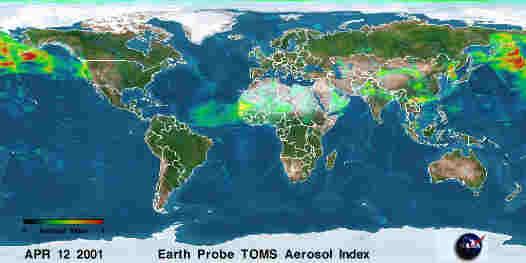
A major impetus for the Stockholm Convention was the finding of POPs contamination in relatively pristine Arctic regions - thousands of miles from any known source. Much of the evidence for long-range transport of airborne gaseous and particulate substances to the United States focuses on dust or smoke because they are visible in satellite images. Tracing the movement of most POPs in the environment is complex because these compounds can exist in different phases (e.g., as a gas or attached to airborne particles) and can be exchanged among environmental media. For example, some POPs can be carried for many miles when they evaporate from water or land surfaces into the air, or when they adsorb to airborne particles. Then, they can return to Earth on particles or in snow, rain, or mist. POPs also travel through oceans, rivers, lakes, and, to a lesser extent, with the help of animal carriers, such as migratory species.
What Domestic Actions Have Been Taken to Control POPs?
The United States has taken strong domestic action to reduce emissions of POPs. For example, none of the original POPs pesticides listed in the Stockholm Convention is registered for sale and distribution in the United States today and in 1978, Congress prohibited the manufacture of PCBs and severely restricted the use of remaining PCB stocks. In addition, since 1987, EPA and the states have effectively reduced environmental releases of dioxins and furans to land, air, and water from U.S. sources. These regulatory actions, along with voluntary efforts by U.S. industry, resulted in a greater than 85 percent decline in total dioxin and furan releases after 1987 from known industrial sources. To better understand the risks associated with dioxin releases, EPA has been conducting a comprehensive reassessment of dioxin science and will be evaluating additional actions that might further protect human health and the environment.
Stopping DDT Use

Over the years, the United States has taken a number of steps to restrict the use of DDT:
1969: After studying the persistence of DDT residues in the environment, the U.S. Department of Agriculture (USDA)cancels the registration of certain uses of DDT (on shade trees, on tobacco, in the home, and in aquatic environments).
1970: USDA cancels DDT applications on crops, commercial plants, and wood products, as well as for building purposes.
1972: Under the authority of EPA, the registrations of the remaining DDT products are canceled.
1989: The remaining exempted uses (public health use for controlling vector-borne diseases, military use for quarantine, and prescription drug use for controlling body lice) are voluntarily stopped.
Today: There is no U.S. registration for DDT, meaning that it cannot legally be sold or distributed in the United States.
Controlling Dioxins
EPA has pursued regulatory control and management of dioxins and furans releases to air, water, and soil. The Clean Air Act requires the application of maximum achievable control technology for hazardous air pollutants, including dioxins and furans. Major sources regulated under this authority include municipal, medical, and hazardous waste incineration; pulp and paper manufacturing; and certain metals production and refining processes. Dioxin releases to water are managed through a combination of risk-based and technology-based tools established under the Clean Water Act. The cleanup of dioxin-contaminated land is an important part of the EPA Superfund and Resource Conservation and Recovery Act Corrective Action programs. Voluntary actions to control dioxins and furans include EPA’s Persistent, Bioaccumulative, and Toxics Program and the Dioxin Exposure Initiative, both of which gather information to inform future actions and further reduce risks associated with dioxin exposure.
How Do POPs Affect People and Wildlife?
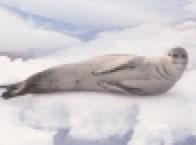
Studies have linked POPs exposures to declines, diseases, or abnormalities in a number of wildlife species, including certain kinds of fish, birds, and mammals. Wildlife also can act as sentinels for human health: abnormalities or declines detected in wildlife populations can sound an early warning bell for people. Behavioral abnormalities and birth defects in fish, birds, and mammals in and around the Great Lakes, for example, led scientists to investigate POPs exposures in human populations (see below for more information on the Great Lakes).
In people, reproductive, developmental, behavioral, neurologic, endocrine, and immunologic adverse health effects have been linked to POPs. People are mainly exposed to POPs through contaminated foods. Less common exposure routes include drinking contaminated water and direct contact with the chemicals. In people and other mammals alike, POPs can be transferred through the placenta and breast milk to developing offspring. It should be noted, however, that despite this potential exposure, the known benefits of breast-feeding far outweigh the suspected risks.
A number of populations are at particular risk of POPs exposure, including people whose diets include large amounts of fish, shellfish, or wild foods that are high in fat and locally obtained. For example, indigenous peoples may be particularly at risk because they observe cultural and spiritual traditions related to their diet. To them, fishing and hunting are not sport or recreation, but are part of a traditional, subsistence way of life, in which no useful part of the catch is wasted. In remote areas of Alaska and elsewhere, locally obtained subsistence food may be the only readily available option for nutrition (see below for more information on the Arctic).
In addition, sensitive populations, such as children, the elderly, and those with suppressed immune systems, are typically more susceptible to many kinds of pollutants, including POPs. Because POPs have been linked to reproductive impairments, men and women of child-bearing age may also be at risk.
POPS and the Food Chain
POPs work their way through the food chain by accumulating in the body fat of living organisms and becoming more concentrated as they move from one creature to another. This process is known as "biomagnification." When contaminants found in small amounts at the bottom of the food chain biomagnify, they can pose a significant hazard to predators that feed at the top of the food chain. This means that even small releases of POPs can have significant impacts.
Biomagnification in Action: A 1997 study by the Arctic Monitoring and Assessment Programme, Exitcalled Arctic Pollution Issues: A State of the Arctic Environment Report, found that caribou in Canada’s Northwest Territories had as much as 10 times the levels of PCBs as the lichen on which they grazed; PCB levels in the wolves that fed on the caribou were magnified nearly 60 times as much as the lichen.
The Role of Science
Although scientists have more to learn about POPs chemicals, decades of scientific research have greatly increased our knowledge of POPs’ impacts on people and wildlife. For example, laboratory studies have shown that low doses of certain POPs adversely affect some organ systems and aspects of development. Studies also have shown that chronic exposure to low doses of certain POPs can result in reproductive and immune system deficits. Exposure to high levels of certain POPs chemicals - higher than normally encountered by humans and wildlife - can cause serious damage or death. Epidemiological studies of exposed human populations and studies of wildlife might provide more information on health impacts. However, because such studies are less controlled than laboratory studies, other stresses cannot be ruled out as the cause of adverse effects.
As we continue to study POPs, we will learn more about the risk of POPs exposure to the general public, how much certain species (including people) are exposed, and what effects POPs have on these species and their ecosystems. EPA developed a report summarizing the science on POPs (see Resources below).
Reservoirs of POPs
POPs can be deposited in marine and freshwater ecosystems through effluent releases, atmospheric deposition, runoff, and other means. Because POPs have low water solubility, they bond strongly to particulate matter in aquatic sediments. As a result, sediments can serve as reservoirs or "sinks" for POPs. When sequestered in these sediments, POPs can be taken out of circulation for long periods of time. If disturbed, however, they can be reintroduced into the ecosystem and food chain, potentially becoming a source of local, and even global, contamination.
The Great Lakes: A Story of Trials and Triumphs

The Great Lakes - Superior, Michigan, Huron, Erie, and Ontario - and their connecting channels make up the largest system of fresh surface water in the world. A vital resource for the United States and Canada, the Great Lakes are used for fishing, swimming, boating, agriculture, industry, and tourism; they are also a source of drinking water and energy.
Despite their size, however, the Great Lakes are vulnerable to pollution. Until the 1970s, a variety of POPs, heavy metals, and other agricultural and industrial pollutants were routinely discharged into the Great Lakes. Toxic substances also entered the Great Lakes Basin through other avenues, including waste sites, river runoff, and atmospheric deposition. These pollutants existed in large enough quantities to warrant concern regarding the effects on human health and wildlife, including several species of fish and shellfish, bald eagles and other birds of prey, and fish-eating mammals such as mink.
Extensive cleanup and pollution control efforts were subsequently launched, and many contaminant levels have declined dramatically in the Great Lakes as a result, illustrating the positive outcomes that can be achieved when communities, government, and industry work together to reduce pollution. Still, some POPs exist at significant concentrations, indicating their persistence and the possibility of continued contamination from other sources, particularly long-range atmospheric transport of POPs from other areas.
In 1972, the United States and Canada signed the first Great Lakes Water Quality Agreement, calling for the two countries to clean up and control pollution of these waters. In 1978, they signed a new agreement, which added a commitment to work together to rid the Great Lakes of persistent toxic chemicals, some of which are POPs. As part of this agreement, both countries have been monitoring atmospheric loadings of these chemicals to the Great Lakes since 1990.
The Great Lakes Binational Toxics Strategy, signed by the United States and Canada in 1997, was an agreement aimed to reduce several persistent toxic pollutants, including certain POPs, in the Great Lakes Basin over a 10-year period. The strategy provided a guide for governments and stakeholders toward the virtual elimination of 12 identified substances through cost-efficient and expedient pollution prevention and other incentive-based actions. Over the course of the ten-year period, working closely with state, provincial, tribal, and local governments and stakeholders from industry, academia, environmental and community groups, both governments made significant progress in meeting that goal of virtually eliminating persistent toxic substances such as mercury, PCBs, and dioxin from discharging into the Great Lakes environment. The two governments agreed to continue to extend the agreement in order to work together to identify new challenges that are presented by emerging substance of concern, such as flame retardants.
Great Lakes Research
Through these efforts, we will steadily continue to reduce levels of toxics in fish. Someday we will answer the question . . . that, yes, Great Lakes fish are safe to eat by anyone, anywhere.
Today, much of our knowledge of POPs, populations at risk, and possible health effects comes from research conducted in the Great Lakes region. We have learned, for example, that a major route of exposure is through contaminated food, particularly fish. Studies conducted in the 1970s showed a correlation between fish consumption and elevated POPs levels in blood, leading researchers to conclude that people can be exposed to POPs by eating contaminated fish.
As a result, extensive fish contaminant monitoring programs have been established in the Great Lakes states, and fish consumption advisories are regularly released to help inform people which fish are safe to eat and how much is safe to eat (see Resources below).
We have also learned that currently some POPs primarily enter the Great Lakes from the air and that urban areas are major sources of airborne POPs.
Alaska: POPs in America’s Arctic
For many Americans, Alaska (much of which is in the Arctic) conjures images of commanding tundra, glaciers, and pure coastal waters - a remote and wild land relatively untouched by the human hand. But even here, POPs have been found in the air, water, soil, plants, fish, and other wildlife.
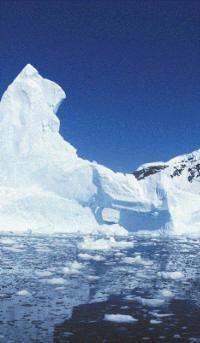
Some POPs have been used or released in Alaska and other northern regions by military sites, smelters, pulp and paper mills, power stations, mines, and other sources. Others have rarely or never been used locally.
POPs can enter Alaska and the Arctic in several ways, too. The first indication that Arctic pollution could originate elsewhere came during the 1950s, when pilots noticed a haze in the North American Arctic that was eventually traced to sources in the lower latitudes. Since then, scientists have discovered that POPs can reach Arctic regions via air, water, and, to a lesser extent, migratory species.
Due to global wind patterns, Alaska can receive POPs from both east Asia and northern Europe. POPs can also travel in rivers from southeast and central Asia into the Pacific Ocean, where water currents flow into the Arctic Ocean.
Alaska’s expansive tundra and close proximity to the Bering Sea and Arctic Ocean make it a home for a wide variety of wildlife, some of which are at particular risk from POPs. During the long, cold Alaskan winters, mammals metabolize fat, and this process releases POPs that have accumulated in the fat directly into their bodies. Then, in the spring, a critical period of reproduction for Alaskan wildlife, POPs that have accumulated in the ice and snow can be released into the environment and the food chain.
The Alaskan and Arctic ecosystems are fragile and take a long time to recover from damage. In addition, slow-growing plants (and the animals that feed on these plants) can be exposed to bioaccumulating contaminants such as POPs for a long time before being consumed at the next level in the food chain. For example, POPs accumulation in and on lichen in Alaska may contribute to levels of contaminants found in caribou tissue. The caribou, in turn, can then be exposed to these contaminants for a long time before being consumed by predators themselves.
Living Close to the Land
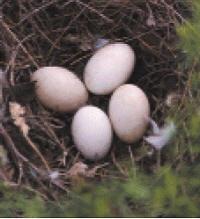
The traditional Alaskan Native’s way of life is rooted in a close relationship with the land. For many Native cultures, subsistence activities (such as hunting seals, whales, and birds; fishing; and gathering bird eggs) are the main methods of procuring food. Alaskan Natives therefore consume much more fish than the average American and more often consume animals higher on the food chain, including predator species such as seals, sea lions, bears, and toothed whales, all of which have potentially higher levels of POPs.
Cooperation in the Arctic
In 1991, nations with territory in the Arctic developed the Arctic Environmental Protection Strategy to protect, enhance, and restore the Arctic ecosystems. In 1996, those same nations established the Arctic Council , a high-level intergovernmental forum, to address environmental protection and sustainable development in the Arctic. The member nations of the Council are Canada, Denmark, Finland, Norway, Russia, Iceland, Sweden, and the United States. The Arctic Council Action Plan has launched a number of projects to reduce the use and release of POPs within the Arctic nations. The Arctic Council’s Arctic Monitoring and Assessment Programme (AMAP) Exit provides member nations with information on threats to the Arctic environment and scientific advice on remedial and preventive actions to protect the environment from contaminants such as POPs.
The Stockholm Convention

The Stockholm Convention on Persistent Organic Pollutants, which was adopted in 2001 and entered into force in 2004, is a global treaty whose purpose is to safeguard human health and the environment from highly harmful chemicals that persist in the environment and affect the well-being of humans as well as wildlife. The Convention requires parties to eliminate and/or reduce POPs, which have a potential of causing devastating effects such as cancer and diminished intelligence and have the ability to travel over great distances.
The Stockholm Convention is managed by the United Nations Environment Program Exit and its Secretariat is based in Geneva, Switzerland. UNEP is the leading international environmental entity that supports the agenda and implementation of environmental sustainability for the United Nations. The COP, or the Conference of the Parties of the Stockholm Convention, governs the POPs Convention, with its members being the Convention’s Parties.
The role of Parties is to implement the obligations of the Convention, including eliminating or restricting the production and use of the intentionally produced POPs, prohibiting and eliminating production and use or import of POPs, conducting research, identifying areas contaminated with POPs, and providing financial support and incentives for the Convention. The process of becoming a Party begins with a state or regional economic integration organization submitting a means of ratification, acceptance, approval or accession to the depositary. Official contact points and national focal points are nominated to carry out administrative, communications, and information exchange procedures.
While the Convention initially focused on 12 intentionally and unintentionally produced chemicals (see list above), the Convention began adding additional substances to the agreement in May of 2009 and will continue to do so. For the most updated list of substances covered by the Convention, please visit www.pops.int. Exit
Intentionally Produced POPs
In the United States, the treaty is of particular importance for the people and environment of Alaska, which are impacted by POPs transported by air and water from outside the state. This is particularly true for Alaskan Natives, who rely heavily on traditional diets consisting of fish and wildlife.
The Convention requires Parties to eliminate or restrict the production and use of the intentionally produced POPs, subject to specified exemptions, with special provisions for DDT and PCBs.
DDT is placed in the restriction annex, which means that its production and use is restricted to disease-vector control. The Convention also establishes a public DDT registry of users and producers, and it encourages the development of safe, effective, affordable, and environmentally friendly alternatives.
For PCBs, the Convention prohibits new PCB production and envisages phasing out electrical equipment that contains high concentrations of PCBs by 2025.
Trade
The Convention prohibits trade in POPs chemicals for which Parties have eliminated production and use. Such POPs may be exported only for environmentally sound disposal. For those POPs that one or more Parties continue to produce or use pursuant to specific exemptions, the Convention allows export of such POPs only to those Parties that have an allowed use exemption under the Convention and those non-Parties that provide certification that they will minimize or prevent environmental releases and destroy or dispose of the POPs in an environmentally sound manner.
Exemptions/Exceptions for Intentionally Produced POPs
The Convention generally exempts from the previously described requirements those quantities of intentionally produced POPs that:
- Are used for laboratory-scale research or as a reference standard.
- Occur as unintentional trace contaminants in products and articles.
- Are used in closed-system, site-limited processes.
- Exist in articles manufactured or already in use on the date that the Convention enters into force for that Party.
The Convention also allows Parties to register for specific exemptions on a country-by-country basis. These exemptions are subject to review and expire after 5 years, unless extended by the Conference of Parties (COP).
Unintentionally Produced POPs
The Convention calls upon Parties to take certain specified measures to reduce releases of unintentionally produced POPs with the goal of their continuing minimization and, where feasible, ultimate elimination. It specifically requires Parties to:
- Develop national action plans to address the release of these POPs.
- Promote the development of preventative measures.
- Apply best available techniques (BAT) for certain new pollution sources (e.g., municipal, hospital, and hazardous waste incinerators) within 4 years after the Convention enters into force. Parties must also promote BAT and best environmental practices for other new and existing sources.
POPs Wastes
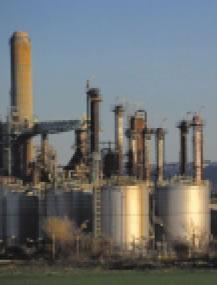
Among other things, the Convention requires Parties to develop appropriate strategies for identifying:
- Stockpiles consisting of or containing intentionally produced POPs chemicals.
- Products and articles in use and wastes consisting of, containing, or contaminated with any POPs chemical.
- Sites contaminated with POPs.
It also requires Parties to take appropriate measures so that POPs wastes are managed in an environmentally sound manner. This includes both destruction and disposal techniques. Although remediation of contaminated sites is not required, any such remediation must be performed in an environmentally sound manner.
Financial and Technical Assistance
The Convention creates a flexible system of technical and financial aid to help developing countries and countries with economies in transition to meet their obligations. Although the Convention does not create a new fund or establish specific assessments, developed countries are to collectively provide new and additional financial resources. These funds will enable developing country Parties to meet the agreed full incremental costs of implementing measures to fulfill their obligations under the Convention. On an interim basis, the Convention designates the Global Environment Facility (GEF) as the primary, but not exclusive, component of the financial mechanism. The GEF is a financial mechanism established to address global environmental threats.
The Convention also specifies that developed countries provide technical assistance and capacity building to help developing countries and countries with economies in transition meet their obligations.
Process for Adding New Chemicals
New chemicals can be added to the treaty based on a scientific review procedure that involves Parties and interested observers. The basic steps of the process are as follows:
- When a Party nominates a chemical, the proposal is sent to a scientific review committee comprised of government- designated experts, who apply the Convention’s screening criteria (for persistence, bioaccumulation, toxicity, and long-range transport).
- If the chemical meets the screening criteria, the committee prepares a risk profile for the chemical.
- If, on the basis of the risk profile, the committee finds that the "chemical is likely, as a result of its long-range environmental transport to lead to significant adverse human health and/or environmental effects such that global action is warranted," the committee prepares a risk management evaluation that considers socio-economic factors.
- Based on the risk profile and the risk management evaluation, the review committee makes a recommendation to the COP whether the chemical should be listed or not listed under the Convention.
- The COP makes the final decision -by three-fourths majority - as to whether the chemical will be listed under the Convention.
The decision of the COP to add a chemical to the treaty is binding on all Parties 1 year later, except for (a) Parties that "opt out" of this decision within the 1-year period, or (b) Parties that choose to invoke a separate "opt in" procedure under which they are not bound until they affirmatively accept a new obligation. The COP began adding new chemicals to the agreement in May of 2009.
Monitoring Process
The Convention provides for an effectiveness evaluation, based on a POPs monitoring and data collection effort that will use existing monitoring programs and mechanisms to the extent possible.
The "Dirty Dozen"
| POP | Global Historical Use/Source | Overview of U.S. Status |
|---|---|---|
| aldrin and dieldrin | Insecticides used on crops such as corn and cotton; also used for termite control. |
Under FIFRA:
|
| chlordane | Insecticide used on crops, including vegetables, small grains, potatoes, sugarcane, sugar beets, fruits, nuts, citrus, and cotton. Used on home lawn and garden pests. Also used extensively to control termites. |
Under FIFRA:
No production (stopped in 1997), import, or export. Regulated as a hazardous air pollutant (CAA). |
| DDT | Insecticide used on agricultural crops, primarily cotton, and insects that carry diseases such as malaria and typhus. | Under FIFRA: No U.S. registrations; most uses canceled in
No U.S. production, import, or export. DDE (a metabolite of DDT) regulated as a hazardous air pollutant (CAA). Priority toxic pollutant (CWA). |
| endrin | Insecticide used on crops such as cotton and grains; also used to control rodents. |
Under FIFRA, no U.S. registrations; most uses canceled in 1979; all uses by 1984. No production, import, or export. Priority toxic pollutant (CWA). |
| mirex | Insecticide used to combat fire ants, termites, and mealybugs. Also used as a fire retardant in plastics, rubber, and electrical products. |
Under FIFRA, no U.S. registrations; all uses canceled in 1977. No production, import, or export. |
| heptachlor | Insecticide used primarily against soil insects and termites. Also used against some crop pests and to combat malaria. | Under FIFRA:
in 1989. No production, import, or export. |
| hexachlorobenzene | Fungicide used for seed treatment. Also an industrial chemical used to make fireworks, ammunition, synthetic rubber, and other substances. Also unintentionally produced during combustion and the manufacture of certain chemicals. Also an impurity in certain pesticides. |
Under FIFRA, no U.S. registrations; all uses canceled by 1985. No production, import, or export as a pesticide. Manufacture and use for chemical intermediate (as allowed under the Convention). Regulated as a hazardous air pollutant (CAA). Priority toxic pollutant (CWA). |
| PCBs | Used for a variety of industrial processes and purposes, including in electrical transformers and capacitors, as heat exchange fluids, as paint additives, in carbonless copy paper, and in plastics. Also unintentionally produced during combustion. |
Manufacture and new use prohibited in 1978 (TSCA). Regulated as a hazardous air pollutant (CAA). Priority toxic pollutant (CWA). |
| toxaphene | Insecticide used to control pests on crops and livestock, and to kill unwanted fish in lakes. | Under FIFRA:
No production, import, or export. Regulated as a hazardous air pollutant (CAA). |
| dioxins and furans | Unintentionally produced during most forms of combustion, including burning of municipal and medical wastes, backyard burning of trash, and industrial processes. Also can be found as trace contaminants in certain herbicides, wood preservatives, and in PCB mixtures. |
Regulated as hazardous air pollutants (CAA). Dioxin in the form of 2,3,7,8-TCDD is a priority toxic pollutant (CWA). |
Acronyms:
FIFRA: Federal Insecticide, Fungicide and Rodenticide Act
TSCA: Toxic Substances Control Act
CAA: Clean Air Act
CWA: Clean Water Act
What Has the United States Done to Address POPs Globally?
The United States has taken a leading role to reduce and/or eliminate POPs and their releases on a regional and global basis. Below are some highlights of our efforts.
- Canada and the United States signed an agreement for the Virtual Elimination of Persistent Toxic Substances in the Great Lakes. The strategy sets long-term goals to promote emissions reductions of toxic substances.
- The United States, Canada, and Mexico established the Commission for Environmental Cooperation (CEC) Exit under the North American Agreement on Environmental Cooperation (NAAEC) (PDF) (40 pp, 75 K, About PDF), which in turn developed a regional initiative on the sound management of chemicals. Under this initiative, the CEC has developed Regional Action Plans, Exit which identify activities that reduce or eliminate risks from chemicals of concern. The CEC, for example, established such plans for PCBs, DDT, and chlordane.
- The United States signed the legally binding regional protocol with other member nations (including European countries, Canada, and Russia) of the United Nations Economic Commission for Europe (UNECE) on POPs under the Convention on Long-Range Transboundary Air Pollution (LRTAP) Exit. This agreement seeks to eliminate production and reduce emissions of POPs in the UNECE region. The original agreement addressed the 12 Stockholm Convention POPs and 4 additional chemicals (hexachlorocyclohexanes, hexabromobiphenyl, chlordecone, and polycyclic aromatic hydrocarbons), but, like the Stockholm Convention, included a mechanism for adding additonal substances to the agreement. Elements from the LRTAP POPs Protocol were used in negotiations for the Stockholm Convention. The United States has not yet ratified the Protocol.
- Other international work has addressed trade in hazardous substances, some of which are POPs. The United States, along with 71 other countries and the European Community, have signed the Rotterdam Convention on the Prior Informed Consent (PIC) Procedure for Certain Hazardous Chemicals and Pesticides in International Trade Exit, building on a 10-year-old voluntary program. The PIC Convention identifies pesticides and industrial chemicals of concern, facilitates information sharing about their risks, and provides countries with an opportunity to make informed decisions about whether they should be imported. Some of the POP substances are already on the PIC list.
- The United States has also provided technical and financial assistance for POPs-related activities to a variety of countries and regions, including Mexico, Central and South America, Russia, Asia, and Africa. Examples of this assistance include development of dioxin and furan release inventories in Russia and Asia, the Chemicals Information Exchange and Networking Project for chemicals managers in targeted countries in Africa and Central America, the destruction of pesticide stockpiles in Africa and Russia, and the reduction of PCB sources in Russia, which reduced emissions of PCBs and enabled Russia to meet the requirements of both the Stockholm Convention and the LRTAP POPs Protocol.
- The United States is also an observer to the Basel Convention Exit, which was designed to reduce cross-border movements of hazardous waste. The Convention focuses on improving controls on the movement of waste, including some POPs waste, preventing illegal traffic, and ensuring that waste is disposed of as close as possible to its source.
Resources
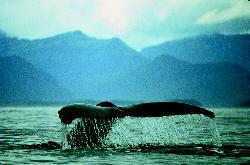
The following resources, many of which are referenced in this page, provide more information on POPs, the Stockholm Convention, and the U.S. role in POPs reduction and elimination.
Programs of the U.S. Environmental Protection Agency
Search www.epa.gov under the following key words (in bold):
Air: Office of Air and Radiation - Develops national programs, technical policies, and regulations for controlling air pollution and radiation exposure.
Cleanup: Office of Solid Waste and Emergency Response - Conducts and supervises investigation and cleanup actions at active and abandoned waste sites, where oil or hazardous chemicals have been or are threatened to be released into the environment, and where aboveground and underground storage tanks have leaked.
International: Office of International and Tribal Affairs - Manages EPA’s involvement in international policies and programs; provides leadership and coordination on behalf of the Agency; and acts as the focal point on international matters.
Pesticides: Office of Pesticide Programs - Evaluates potential new pesticides and use; reviews older pesticides; promotes reduced-risk pesticides and pesticide management alternatives; communicates safe practices.
Pollutants/Toxics: Office of Pollution Prevention and Toxics - Promotes pollution prevention, safer chemicals, risk reduction, and public understanding of risks.
Research: Office of Research and Development - The office’s National Center for Environmental Assessment (NCEA) developed the Foundation for Global Action on POPs: A United States Perspective, a report on the current science of POPs (in 2001).
Waste: Office of Resource Conservation and Recovery - Operates under authority of the Resource Conservation and Recovery Act to protect human health and the environment by ensuring responsible national management of hazardous and nonhazardous waste.
Water: Office of Water - Protects U.S. waters and develops consumption advisories for fish and wildlife. View Advisories and Technical Resources for Fish and Shellfish Consumption.
Great Lakes National Program Office - Based in Chicago, works with Canada and EPA Regions 2, 3, and 5 to address Great Lake issues; communicates information about the Great Lakes ecosystem and human health; and conducts monitoring and other activities.
Other Resources
- United Nations Environment Programme (UNEP) Chemicals Programme: http://www.unep.org/chemicalsandwaste/ Exit
- United States Department of State, Bureau of Oceans and International Environmental and Scientific Affairs
Great Lakes
- Great Lakes Information Network: https://www.glc.org/glin Exit
- International Joint Commission: www.ijc.org Exit
Alaska and the Arctic
- Arctic Council: www.arctic-council.org Exit
- Arctic Monitoring and Assessment Programme: www.amap.no Exit
POPs chemicals threaten human health and the environment all over the world. The United States is committed to addressing POPs in cooperation with other countries. Together, we can find global solutions for this global problem.
Contacts
For more information about EPA's efforts with Persistent Organic Pollutants (POPs), contact:
Karissa Kovner
U.S. Environmental Protection Agency
Office of the Assistant Administrator for Chemical Safety and Pollution Prevention (7101M)
1200 Pennsylvania Ave., NW
Washington, DC 20460
E-mail: kovner.karissa@epa.gov
(202) 564-0564
